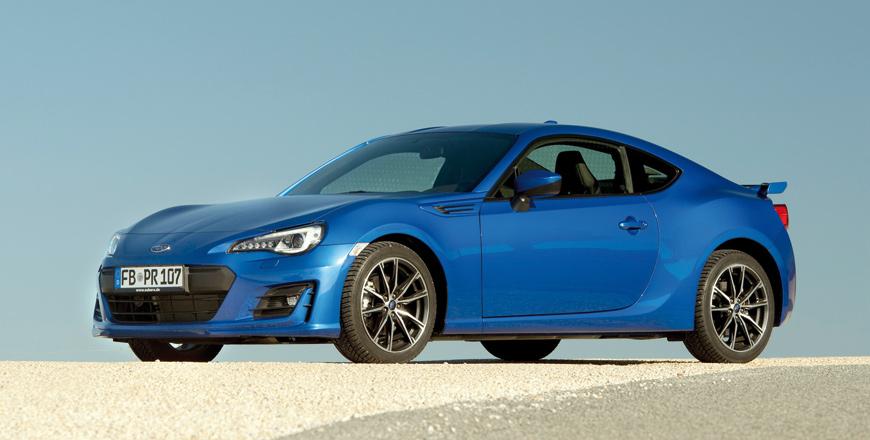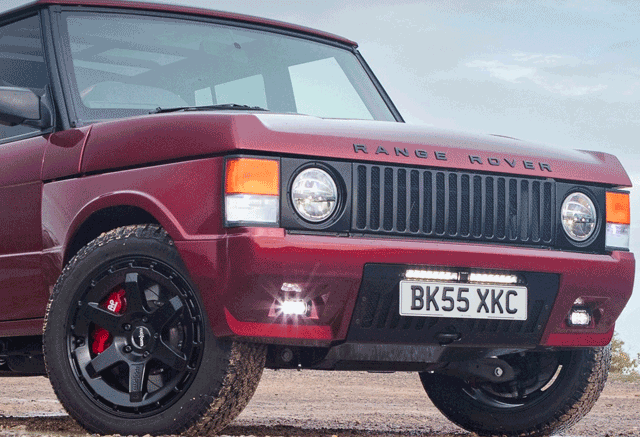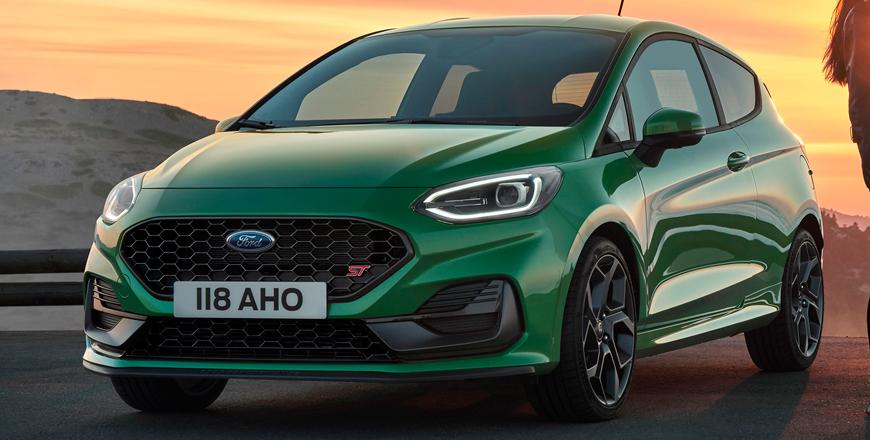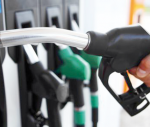You are here
Resurgence of Japanese Sports Coupe: Nissan Z, Toyota Supra and Subaru BRZ
By Ghaith Madadha - Oct 24,2022 - Last updated at Oct 24,2022

A sign of the increasing sophistication of Japan’s automotive industry and its rapid ascent and reputation for quality, reliability and value, the advent of the Japanese sports coupe was also intended to garner a reputation for desirability.
Taking the fight to European and US manufacturers, from the 1960s and 1970s, Japanese sports coupes may not be as prevalent as in the past, but have nevertheless been making a comeback.
With a back catalogue of icons like the 1967 Toyota 2000GT – which briefly replaced James Bond’s usual Aston Martin – and the rotary-engine Mazda RX7 since 1978, Japanese sports coupes, however, hit their stride on international markets with the 1969 arrival of the Datsun 240Z (aka Nissan Fairlady Z). The latest, resurgent crop meanwhile includes the lightweight and uncomplicated Subaru BRZ, latest Nissan Z iteration, and the returning Toyota Supra.
Nissan Z
A classic front engine and rear-drive sports car that promises old school thrills, the Nissan Z’s balanced chassis, combustion engine and manual gearbox cater to hardcore driving enthusiasts, even as the Japanese manufacturer positions other products towards greater electrification. Initially complementing the more powerful and soon to be discontinued Nissan GT-R on its arrival, the Z is, however, a different beast geared for driving pleasure rather than outright performance.
Dropping the numerical prefixes of predecessors, the strikingly modern yet subtly retro-infused Z’s clean, fresh and unambiguously visceral design pays homage to predecessors, with its long bonnet and pert, short squared-off tail hinting at the original 240Z, and rear lights inspired by the 300Z. Uncluttered in surfacing and styling sensibility, the Z features a big rectangular grille, slim side intake gills and an athletic, alert and urgent yet un-fussed demeanour.
Powered by a twin-turbocharged 3-litre V6 engine producing 400BHP at 6,400rpm and 350lb/ft throughout 1,600-5,200rpm the Z provides both sportily peaky power delivery and abundant mid-range versatility, and is available with either 6-speed manual or 9-speed automatic gearboxes. Pouncing through 0-97km/h in 4.2-seconds in manual guise, the Z is, meanwhile, available in standard Sport or a Performance variant with larger staggered alloy wheels and a limited-slip rear differential for added agility and stability.
Specifications
Engine: 3-litre, twin-turbocharged V6-cylinders
Gearbox: 6-speed manual, rear-wheel-drive, limited slip differential
Power, BHP (PS) [kW]: 400 (406) [298] @6,400rpm
Torque, lb/ft (Nm): 350 (475) @1,600-5,200rpm
0-97km/h: 4.2-seconds (estimate)
Top speed: 250km/h (estimate)
Length: 4,380mm
Width: 1,845mm
Height: 1,315mm
Wheelbase: 2,550mm
Weight: 1,596kg (estimate)
Suspension, F/R: Double wishbones/multi-link
Tyres, F/R: 255/40R19/275/35R19
Toyota Supra
Something of a modern icon in its previous generation with its conservative power estimates and highly durable, tuner-friendly engine, the Toyota Supra made its comeback in 2019. Returning after a 21-year hiatus, the latest Supra was follow-up to the 2012 Toyota GT86, on the path to bringing the fun back to the giant Japanese manufacturer, which had developed a reputation for reliable and sensible, if not quite exciting, cars during the 2000s.

Like the largely Subaru-engineered GT86, the Supra is similarly based on the BMW Z4, albeit developed with Toyota, with the fixed-head Supra coupe expected to undoubtedly be stiffer than BMW’s open-top roadster. In terms of design, however, the Supra may share its basic snouty long-bonnet proportions with the Z4, but its styling details are starkly different with busy, bulging and arcing body surfacing, enormous intakes and twin-dome roof.
Powered by a choice of turbocharged BMW engines including an entry-level 2-litre 4-cylinder developing 194BHP and 255BHP, the Supra is also available with a 3-litre in-line 6-cylinder engine in 355BHP and 382BHP states of tune. Powering the rear wheels through a choice of 8-speed automatic or 6-speed manual gearboxes, the most powerful Supra also produces 368lb/ft torque and sprints through 0-97km/h in estimated 4.2-seconds, in manual variant.
Specifications
Engine: 3-litre, turbocharged, in-line 6-cylinders
Gearbox: 6-speed manual, rear-wheel-drive, limited slip differential
Power, BHP (PS) [kW]: 382 (387) [285] @5,800-6,500rpm
Torque, lb/ft (Nm): 368 (499) @1,800-5,000rpm
0-97km/h: 4.2-seconds (estimate)
Top speed: 250km/h (estimate)
Length: 4,380mm
Width: 1,865mm
Height: 1,295mm
Wheelbase: 2,470mm
Weight: 1,542kg (estimate)
Suspension, F/R: Double wishbones/multi-link
Tyres, F/R: 255/35R19/275/35R19
Subaru BRZ
Less complex and more affordable than most sports cars, the Subaru BRZ first launched in 2012, and follows a similar “just right” approach as the Mazda MX-5 roadster, to deliver an engagingly pure and back-to-basic driving experience with none of the bloat often associated with more up-market coupes. Arriving in 2021, the second generation BRZ remains true to its predecessor’s uncluttered and unexaggerated ethos, with only negligible size and weight gains.

A recipe for fun driving with its classic front-engine and rear-drive balance, standard 6-speed manual gearbox and low-slung and compact horizontally-opposed, naturally-aspirated 4-cylinder engine, the new BRZ, however, gets bump up from 2- to 2.4-litres in engine displacement, and is about 50 per cent stiffer for improved handling, comfort and safety. Like its predecessor, the BRZ is perhaps more widely known and sold as the badge-engineered Toyota GR86.
Eager and progressive in delivery, the BRZ’s incrementally larger and more powerful high-strung “boxer” engine develops 228BHP at 7,000rpm and 184lb/ft torque peaking at 3,700rpm. Engineered for high-rev thrills, the lightweight BRZ hustles its 1,277kg mass through 0-97km/h in an estimated 5.4-seconds and onto 225km/h. Famed for intuitively balanced and precise rear-drive handling and steering, the nimble BRZ also features a limited-slip differential for enhanced stability and agility.
Specifications
Engine: 2.4-litre, horizontally-opposed 4-cylinders
Gearbox: 6-speed manual, rear-wheel-drive, limited slip differential
Power, BHP (PS) [kW]: 228 (231) [170] @7,000rpm
Torque, lb/ft (Nm): 184 (250) @3,700rpm
0-97km/h: 5.4-seconds (estimate)
Top speed: 225km/h (estimate)
Length: 4,265mm
Width: 1,775mm
Height: 1,310mm
Wheelbase: 2,575mm
Weight: 1,277kg
Suspension, F/R: MacPherson struts/Double wishbones
Tyres: 215/45R17
Related Articles
A back-to-basics naturally-aspirated rear-drive sports car with restrained power and weight, the Subaru BRZ is an attainable sports car desi
Capturing the glamour, charisma and immersive connection of cars from a bygone era and often lacking in disconnected, over-sanitised, overwe
A practical, fun, fast and usually affordable mode of transport that had its origin in the 1970s Volkswagen Golf GTI and Renault 5 Alpine, t



















